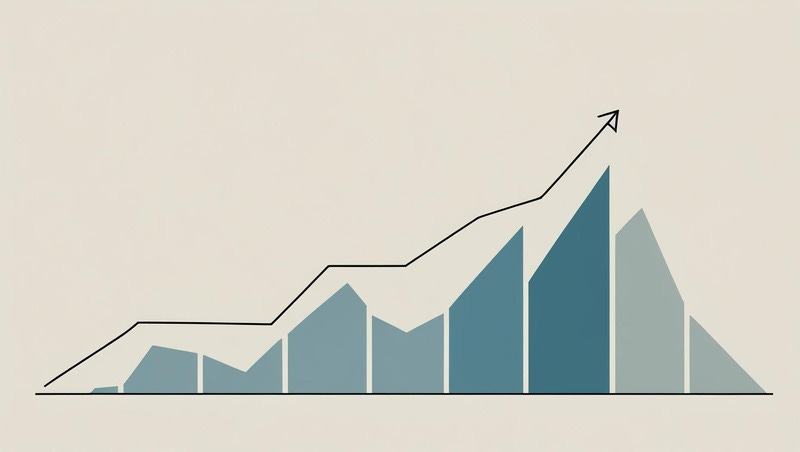Increasing Small Business Profits by $85K With Simple Tweaks
Behind-the-Scenes Fixes That Made It Happen
Last year, I had a client from Canada—one with a degree in engineering and architecture who decided to design and sell custom-made bed frames.
All by himself.
He leased a warehouse, sourced raw materials, purchased the necessary equipment, created his website and an Etsy shop, and started selling.
The average selling price was $4,000. He was selling ~100 products per year.
All of this sounds good. However, he wasn’t a business person. After the pandemic, the sales were down ~40%, and he was feeling exhausted.
He has been doing the same thing, alone, since 2017. The dream had started to feel like a trap. The drudgery of fulfilling orders was replacing the passion that started the business.
So, he hired me.
I spent ~3 days with him, trying to understand everything he does, while also getting to know him as a person. During those three days, five key actions were identified that ultimately led to $85,000 in additional annual profit.
#1 The elephant in the room - Shipping
Shipping large physical products is costly, especially if the majority of the customers are in a different country (in this case, from Canada to the United States).
These costs were steep, sometimes over $1,000 per product. At first glance, there’s not much to be done. After all, a small business owner has no leverage.
However, there were occasional returns, and these were particularly damaging.
Item shipped: $1,000
Item returned to Canada: $1,000
Item sold again: $1,000
Total: $3,000 in shipping costs.
But it gets a bit worse. When the first customer ordered the bed frame, it was "custom-made” for him, and the $4,000 selling price was justified.
Once it was returned, it was no longer custom-made for the next buyer. It was a bed frame waiting for a buyer. Therefore, it had to be heavily discounted.
So every return resulted in an unprofitable sale.
Solution: We partnered with a fulfillment warehouse located in the U.S. Returned items were shipped directly there, repackaged, and then shipped out to new customers. This simple logistical shift drastically cut shipping costs and freed up his time.
#2 We improved the paid advertising campaigns
A significant part of the three days was focused on how the products were presented online and what could be improved.
The SEO was already looking good, and the impressions were there.
His products were of premium quality, but his online presence didn’t fully reflect that. The traffic was there, but the ads, imagery, and copy weren’t compelling enough to convert visitors into buyers.
Solution: Start from scratch. We replaced basic product shots with high-quality images that told the story of his craftsmanship, showcasing the entire process from raw wood to finished product. This visually justified the premium price. We paired this with more descriptive headlines and copywriting that captured the artistry behind the work. The result? A higher conversion rate and more sales, without increasing his ad spend.
#3 We monetized unused warehouse space (and parking lots)
During busy periods, less than half of the warehouse was in use. When the business was started, there was no smaller warehouse available around that area, and this one had an acceptable price.
Solution: Sublease part of the warehouse, as well as the two unused parking lots.
The biggest problem was his isolation and burnout. He was a creator who had become an assembler, and the lack of social interactions was draining his energy.
So, that’s what we aimed to fix next.
#4 Workshops
Woodworking is a profession for many, but it can also be a hobby. So, we brainstormed around the idea of organizing workshops.
His manufacturing process was highly organized, and he was working on five bedframes at once.
So, we identified a few activities in the process, where a complete amateur could follow his instructions, and do “an okay” job. Not a great job, but also not one where the product is ruined.
The workshop was a win-win:
The payment for a 4-hour workshop was low, which attracted many people who wanted to learn the basics of woodworking from a professional.
Although he is more experienced and can do the job faster than the rest, it would take him longer than five amateurs under his supervision; and
He got to socialize, teach, and share his passion, which fought off the loneliness and reignited his creative spark.
#5 The big reward
With the above decisions:
The conversion rate was higher, leading to more sales;
The shipping costs were reduced;
No time was spent on repackaging returned products;
Unused warehouse space and parking lots were monetized;
A workshop income stream was introduced;
Manufacturing time was slightly reduced.
What started as an exhausting one-man operation became a revitalized business, with an extra $85,000 in profits.
But the real reward wasn’t just the money. It was the freedom. With a more efficient and profitable business, he finally had the ability to hire others to manage the day-to-day orders. This allowed him to get back to what he loved: designing new products and being the architect of his business, not just a lonely worker in it.
If you found this business case helpful, please feel free to share it with a fellow business owner.
If you are stuck, overwhelmed, or just know there’s more potential waiting to be unlocked, let’s talk. I work with solo founders and small business owners to fix what’s not working and grow what is.
This is a no-cure, no-pay service. If I don’t create value for you, you don’t owe me a cent.
Reach out at kosta@ristovskiconsulting.com to explore what’s possible.


